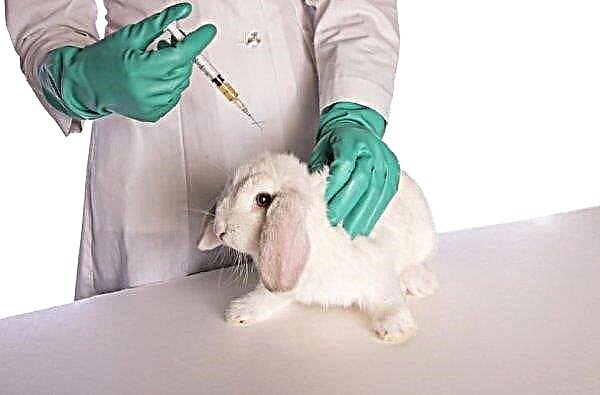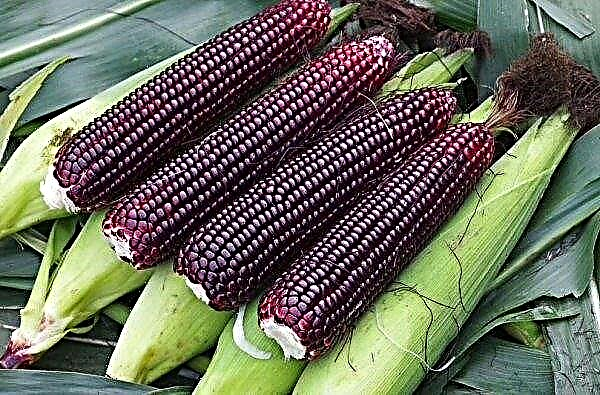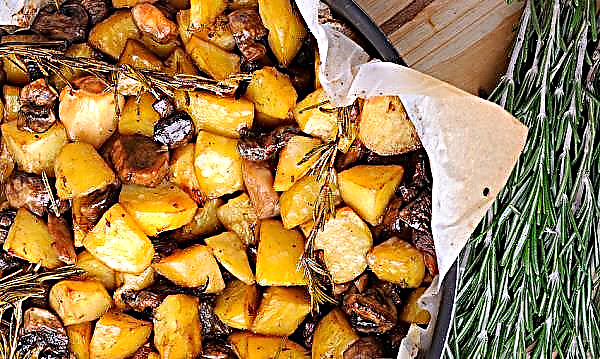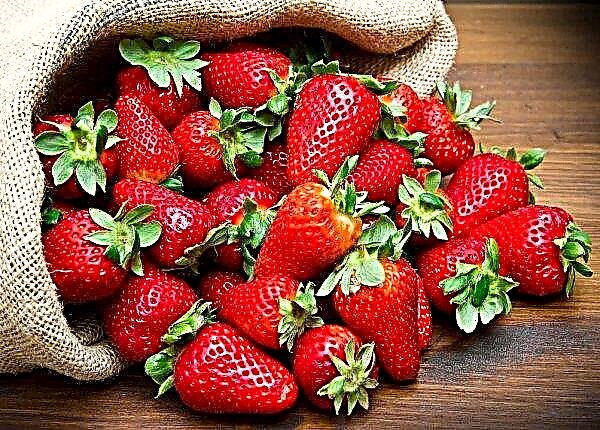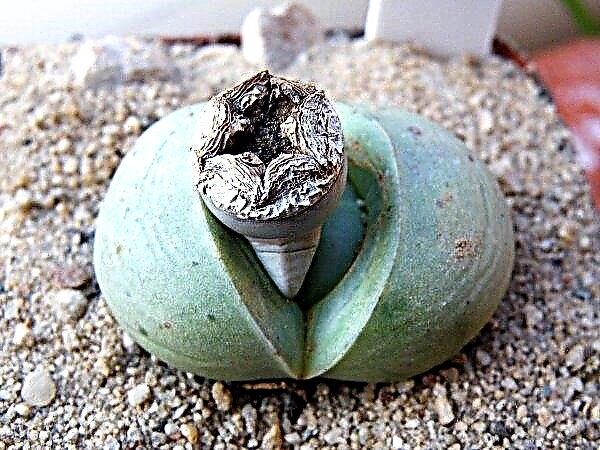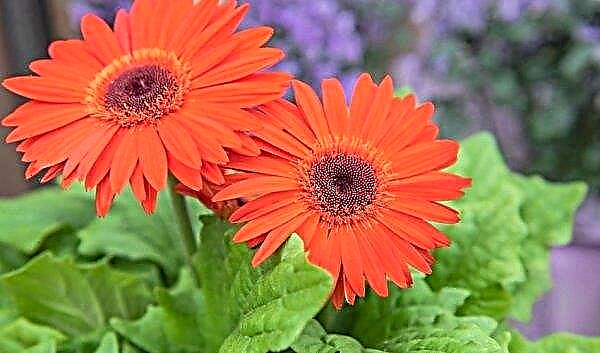Eggplants more often lose flowers than cucumbers and tomatoes, as they are more demanding of the conditions of maintenance and care than other crops. Nevertheless, a similar problem can be avoided, although it cannot be completely eliminated, only minimized as much as possible. To do this, you need to know the main causes of this problem. We will discuss them further.
Causes of eggplant flowers to fall
The reasons that eggplants lose flowers in a greenhouse and open ground are almost the same, with the exception of some points.
Irregularity of watering
Often, gardeners cannot provide regular watering because of their employment or the remoteness of the plot from housing. Sometimes this is due to ignorance of the rules for watering blue. As a result of chaotic watering, the plant experiences sharp changes between drought and abundant moisture.  This leads to the fact that it drops not only flowers, but also the ovary. To prevent this from happening, you need to adhere to the watering schedule: 2-3 times in 7 days. It is advisable to resort to irrigation technology "on the grooves" and the mandatory loosening of the soil.
This leads to the fact that it drops not only flowers, but also the ovary. To prevent this from happening, you need to adhere to the watering schedule: 2-3 times in 7 days. It is advisable to resort to irrigation technology "on the grooves" and the mandatory loosening of the soil.
Important! In the absence of moisture for a long time, eggplant can completely stop bearing fruit.
High humidity
Eggplant flowers have heavy pollen. For fertilization to succeed, the humidity must be low. Otherwise, pollen, saturated with moisture, becomes even heavier and cannot leave the flower. Due to the lack of pollination, the ovary begins to fall, so you need to carry out the pollination process manually. A brush is carried out on the stamens, and then on the pestles.
Lack of pollination of a plant
Usually blue ones are self-pollinated plants, so it is very convenient to grow them in a greenhouse. But it happens that a lot of pollen accumulates in eggplant flowers, and it becomes heavier, sticks together, because of which it can not be transported. Pollination does not occur, and the plant remains covered with flowers, without fruit ovary. Also often the reason for the lack of ovary in greenhouses is the fact that although the plant is self-pollinated, an irritant is needed to move pollen. In open ground, they are insects. To stimulate the process of self-pollination in a greenhouse, you need to move the flower with a brush.
Also often the reason for the lack of ovary in greenhouses is the fact that although the plant is self-pollinated, an irritant is needed to move pollen. In open ground, they are insects. To stimulate the process of self-pollination in a greenhouse, you need to move the flower with a brush.
Excess nitrogen
If you go too far with nitrogenous fertilizers in the initial period of development of the culture, then there will be an active dropping of buds, flowers and even the ovary. To aggravate the situation, insufficient lighting is capable. What to do in this case:
- spray the plant with a solution of boron and potassium permanganate;
- provide additional lighting.
Important! Eggplants love a lot of light, so they are not recommended to be grown in the northern regions, where daylight hours are very short. If you really want, then you can look for shade-hardy varieties.
Shortages of boron
The lack of this element in the soil is perhaps one of the main reasons why blue flowers fall. In addition, the plant immediately slows down in growth. Spraying the bushes with a solution of 5 g of boric acid on a bucket of water or replenishing the soil with boron-containing fertilizers (once every three years) will help to solve the situation. For preventive purposes, it is recommended to feed the culture with boric acid at the beginning of the flowering period.
For preventive purposes, it is recommended to feed the culture with boric acid at the beginning of the flowering period.
Disease
Common ailments affecting blue:
- Blackleg. Fungal disease, manifested by darkening and thinning of the basal neck. The affected area may be covered with gray coating. If the ailment is launched, then the plant begins to fade, and as soon as the fungus reaches the roots, it completely withers. It usually manifests itself at the first shoots and accelerates in distribution if there is an excess of moisture in the air and soil. You can overcome the attack by replacing the soil in the greenhouse or by disinfecting it with an aqueous solution of bleach (200 g / 10 l). A diseased plant is immediately destroyed. For preventive purposes, beds are regularly thinned out and the temperature regime is observed.

- Tobacco mosaic. Ailment of a viral nature. You can determine it by lightening the foliage and covering it with light green or dark green spots, arranged randomly, like a mosaic. The sheet may be deformed. As soon as the first signs of the disease are found, it is necessary to treat the bush with milk, with zero fat content, mixed with laundry soap (20 g / 1 l), otherwise it will die. As a preventative measure, the seeds are soaked before planting in a 20% hydrochloric acid solution for half an hour.

- White rot. It affects the roots first, and then the aerial part of the culture. White plaque with solid inclusions appears on the stem. The fruits become watery and soften. The disease progresses at low temperature. If a disease is detected, the affected parts of the bush are torn off, the place of the cut is sprinkled with ash. After 4–5 days after the procedure, mineral fertilizers are applied (2 g / 10 l of water). For preventive purposes, the greenhouses are regularly ventilated, and the bushes are sprayed three times, with an interval of one and a half to two weeks, with a mixture of washing powder and copper sulfate, diluted in water (2 tbsp. L. Powder, 1 tsp vitriol per 10 l of water).

Did you know? There is a white eggplant variety. Its fruits are very similar to chicken eggs. Residents of England call them "Easter eggs."
Pests
Most of all the blue spider mite annoys. He is a common reason that flowers fall. The insect appears with whitish dots all over the leaf. You can drive him away by treating the bush with Fufanon or Fitoverm.
Among other pests are more common:
- Whitefly Likes to accumulate on the back of the foliage. She eats plant juice, which greatly depletes it. To get rid of the scourge, you need to hang yellow sticky traps. The sticky substance may be petroleum jelly, rosin or honey. They are applied to cardboard or Whatman paper, painted in yellow. It can be destroyed with insecticides.

- Aphid. It lives perfectly in a humid, warm place, therefore it very often attacks a culture growing in a greenhouse. It appears in open ground during heavy rains during hot summers. The insect, eating eggplant juice, depletes it, which leads to loss of flowers, deformation of leaves and fruits. You can drive out aphids using insecticides or an aqueous ash solution (1 tbsp. In a bucket of hot water, leave for a day, strain, mix a little liquid soap). Spraying should be carried out in the morning.

Measures to increase ovarian formation
A large number of flowers on the bush is not a guarantee of a good harvest. The fact is that the plant is not able to draw a huge number of fruits (more than 15), therefore, so that there are large fruits on the bush, you need to leave only the largest buds. Others are removed. The number of shoots is also regulated. Choose 3-4 of the strongest, and pinch the rest. This stimulates the formation of buds. After the ovary has formed, the extra flowers must be removed so that the fruits are poured faster.
Some gardeners recommend eggplant on trellises, so that during flowering it was enough just to shake the support slightly to move the pollen. This will result in the pollination of more flowers.
Did you know? Eggplant was first cultivated 1500 years ago in Asia (east, south). Arabs spread the culture, bringing it to Africa, from where it later came to Europe.
Useful tips gardeners
When growing eggplant, it is recommended to follow these rules:
- As soon as you notice that the flowers have fallen, spray the bushes with boric acid, and then establish the cause of the loss of color.
- Pollinate greenhouse plants by hand and at the same time lure insects into the greenhouse.
- Keep humidity and temperature up to standard. If this fails, use the preparations “Bud”, “Ovary”.
- If the loss of ovary and flowers occurs due to prolonged rains, low temperature, then foliar top dressing with calcium nitrate (0.07%).
- Weak bushes support immunomodulators.
 The measures described above are usually enough to get rid of the problem and resume the formation of the ovary. Moreover, it is believed that if on eggplant beds the loss of empty flowers is 40%, not more, then this is quite natural, and there is no need to panic too much. But action is still desirable.
The measures described above are usually enough to get rid of the problem and resume the formation of the ovary. Moreover, it is believed that if on eggplant beds the loss of empty flowers is 40%, not more, then this is quite natural, and there is no need to panic too much. But action is still desirable.







